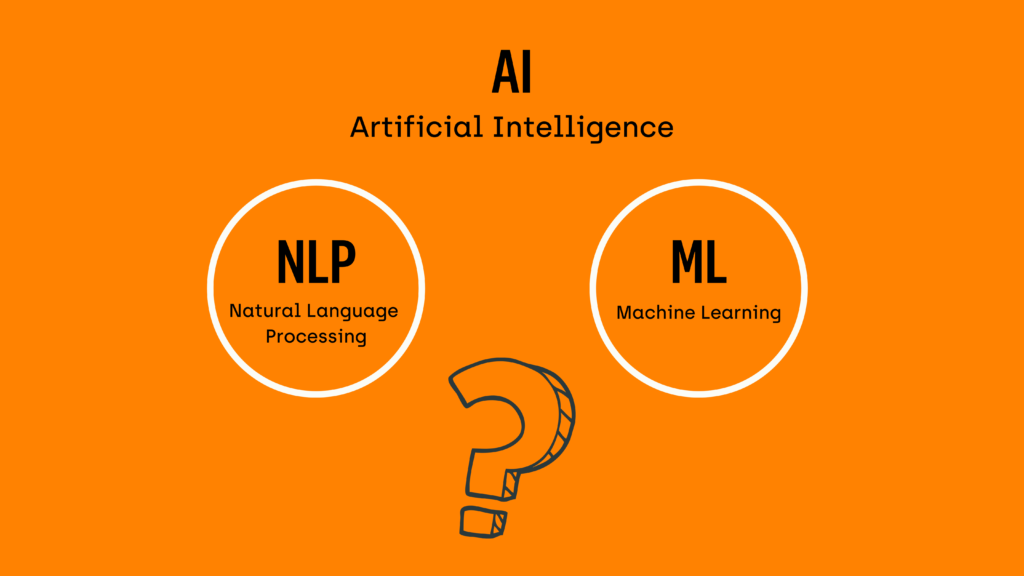
The foundation of contemporary artificial intelligence is Natural Language Processing (NLP), which allows robots to comprehend, interpret, and produce human language. NLP is transforming how people use technology, from chatbots to translation tools. We will explore NLP’s definition, operation, main uses, and the reasons it is essential to overcoming the communication gap between humans and robots in this blog.
What is Natural Language Processing (NLP)?
A branch of artificial intelligence called “natural language processing” is concerned with how computers and human language interact. Enabling robots to read, understand, and react to spoken and written words in a meaningful and contextually relevant manner is the ultimate goal of natural language processing (NLP).
NLP analyzes and interprets language by fusing machine learning techniques with computational linguistics. Machines can interpret language more naturally thanks to NLP systems’ ability to recognize patterns, comprehend grammar, and deduce meaning from enormous datasets.
How Does NLP Work?
NLP involves several key steps to process and understand human language effectively:
- Tokenization: Breaking down text into smaller units, such as words or phrases.
- Part-of-Speech Tagging: Identifying the grammatical parts of speech (e.g., nouns, verbs, adjectives) in a sentence.
- Named Entity Recognition (NER): Recognizing and categorizing entities such as names, dates, and locations.
- Sentiment Analysis: Determining the emotional tone behind words.
- Parsing: Analyzing sentence structure to understand grammar and relationships between words.
- Language Modeling: Predicting the next word in a sequence or understanding the context of words in a passage.
Key Applications of NLP
NLP powers a wide range of technologies that have become integral to our daily lives. Here are some of its most prominent applications:
1. Chatbots and Virtual Assistants
Tools like Siri, Alexa, and Google Assistant leverage NLP to understand user queries and provide relevant responses. These systems utilize conversational AI to create human-like interactions.
2. Machine Translation
Platforms like Google Translate use NLP to translate text from one language to another, making cross-cultural communication more accessible.
3. Sentiment Analysis
Businesses use sentiment analysis to gauge customer opinions about their products and services. This application is especially popular in social media monitoring and brand management.
4. Text Summarization
NLP algorithms can condense long articles or documents into concise summaries, saving time for readers.
5. Speech Recognition
Speech-to-text systems, such as those used in transcription services and voice typing, rely on NLP to convert spoken language into written text.
Why is NLP Important?
Artificial intelligence relies on natural language processing (NLP) to facilitate machine-human interaction in natural languages. The effects of this capacity on accessibility, automation, and international communication are enormous:
- Accessibility: Digital material is becoming more accessible to individuals with impairments or language problems because to NLP-powered solutions such as screen readers and real-time translators.
- Efficiency: Companies and individuals can save time and resources by automating language-related processes.
- Personalization: Natural language processing (NLP) allows for personalized suggestions and experiences by gaining insight into user behavior and preferences.
Challenges in NLP
Despite its advancements, NLP faces several challenges:
- Ambiguity: Words and sentences often have multiple meanings depending on context.
- Low-Resource Languages: Most NLP models are trained on widely spoken languages, leaving less common languages underserved.
- Bias in Data: Machine learning models can inherit biases present in the training data, leading to skewed or unfair outcomes.
The Future of NLP
As AI continues to evolve, so will the capabilities of NLP. Future advancements may include:
- Improved Contextual Understanding: Enhanced models that grasp nuanced meanings and cultural references.
- Multilingual Proficiency: Tools capable of seamlessly handling multiple languages simultaneously.
- Real-Time Language Processing: Faster and more accurate real-time language understanding for applications like live translations.
Conclusion
The communication between humans and machines is being revolutionized by natural language processing. NLP fills the gap between human intent and machine capacity by allowing technology to comprehend and produce human language. NLP has limitless potential to improve accessibility, automation, and worldwide communication as AI advances.
Understanding NLP is essential to understanding how technology is changing human communication, whether you’re a tech enthusiast interested in AI’s potential or a business looking to use NLP technologies.
Meta Description: Discover how Natural Language Processing (NLP) enables AI to understand and generate human language. Learn about its workings, applications, challenges, and future potential.
Keywords: Natural Language Processing, NLP, AI, Machine Learning, Chatbots, Sentiment Analysis, Speech Recognition, Machine Translation.
